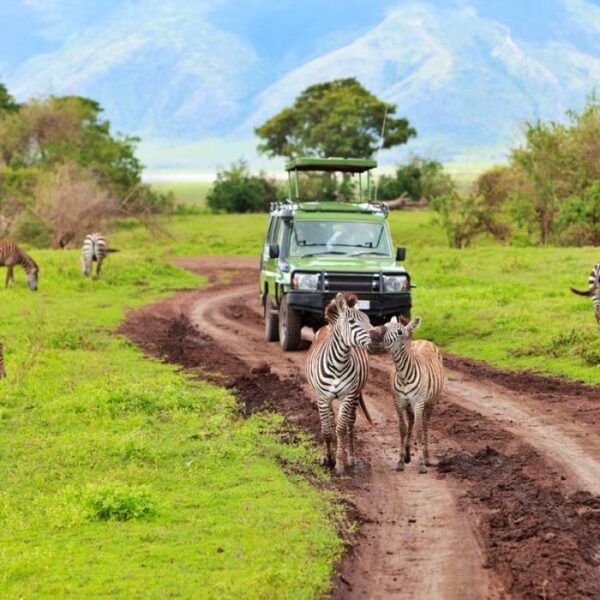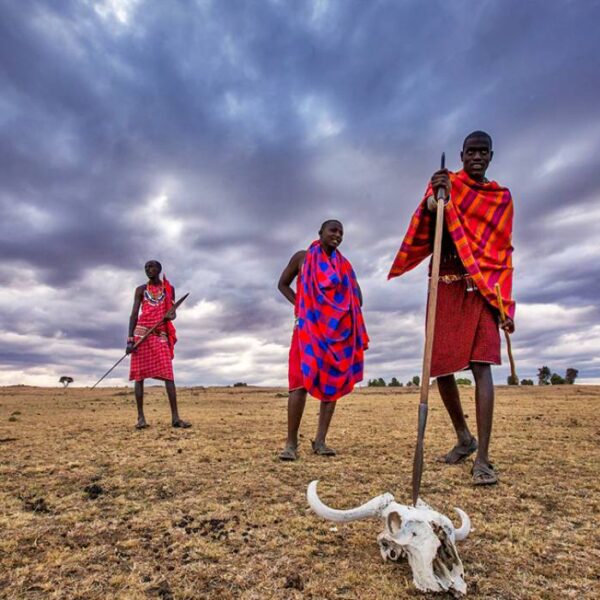Tanzania is world-renowned for its breathtaking landscapes, diverse wildlife, and unparalleled safari experiences. Home to some of Africa’s most iconic national parks and game reserves, Tanzania is a haven for safari enthusiasts looking to immerse themselves in nature and witness the awe-inspiring beauty of African wildlife. Whether you’re a seasoned safari-goer or embarking on your first adventure, Tanzania’s national parks offer something for everyone. Here’s a guide to the best national parks in Tanzania for those seeking an unforgettable safari experience.
1. Serengeti National Park – The Icon of African Safaris
Serengeti National Park is one of the most famous wildlife destinations on the planet and for a good reason. Covering over 14,750 square kilometers, the Serengeti is best known for the Great Migration, where over 1.5 million wildebeest, zebras, and gazelles trek across the plains in search of greener pastures. This natural wonder is accompanied by dramatic river crossings, where predators such as crocodiles, lions, and leopards lie in wait. Beyond the Great Migration, Serengeti offers incredible year-round wildlife viewing. The park is home to the Big Five (lion, elephant, buffalo, leopard, and rhino), and visitors can witness thrilling predator-prey interactions in the park’s vast savannahs. The diverse ecosystems, ranging from open plains to wooded areas and kopjes, ensure that every game drive is filled with surprises.
Best Time to Visit: June to October (for the Great Migration and general game viewing).
2. Ngorongoro Crater – A Wildlife-Packed Wonder
Ngorongoro Crater, the largest unbroken volcanic caldera in the world, is a geological marvel and a wildlife paradise. Known as the “Eighth Wonder of the World,” this UNESCO World Heritage site is home to one of the densest concentrations of wildlife in Africa. The crater’s diverse habitats, including forests, grasslands, and swamps, support a wide range of species, including elephants, lions, rhinos, and hippos. Ngorongoro is one of the best places in Tanzania to spot the endangered black rhino, as well as the majestic lions that patrol the crater floor. The proximity of wildlife makes for an exciting game-viewing experience, with plenty of photographic opportunities against the backdrop of the crater’s dramatic cliffs.
Best Time to Visit: Year-round, though wildlife is most concentrated in the dry season (June to October).
3. Tarangire National Park – Elephants and Baobabs Galore
If you love elephants, Tarangire National Park should be at the top of your list. Known for its large elephant herds, Tarangire offers a unique safari experience with its picturesque landscape dominated by ancient baobab trees. The park’s ecosystem supports a variety of wildlife, including giraffes, zebras, wildebeest, and predators such as lions and leopards. During the dry season, Tarangire River becomes the park’s lifeline, attracting massive herds of animals to its banks for water. This makes the park an excellent destination for game drives and wildlife photography, particularly in the dry months when animals congregate around water sources.
Best Time to Visit: June to October (dry season, for wildlife viewing around the Tarangire River).
4. Ruaha National Park – The Hidden Gem
For safari enthusiasts seeking a more remote and less crowded destination, Ruaha National Park offers an untouched wilderness experience. As the largest national park in Tanzania, Ruaha is often overlooked by tourists, but it boasts an impressive array of wildlife. The park is home to one of Tanzania’s largest elephant populations, as well as large prides of lions and a healthy population of wild dogs, which are rare in other parks. Ruaha’s landscape is diverse, featuring rugged hills, baobab trees, riverine forests, and open plains. The park’s remoteness means that you’ll often have game-viewing areas to yourself, providing a more intimate and exclusive safari experience.
Best Time to Visit: June to October (for the dry season and concentrated wildlife viewing).
5. Selous Game Reserve (Nyerere National Park) – Untamed Wilderness
Selous Game Reserve, now part of the newly renamed Nyerere National Park, is one of Africa’s largest protected areas and remains largely untouched by human activity. The park’s vast landscape includes rivers, lakes, swamps, and woodlands, making it an ideal location for safari enthusiasts seeking diverse scenery and wildlife experiences. Selous is renowned for its boat safaris along the Rufiji River, where visitors can observe hippos, crocodiles, and birdlife in abundance. The park is also home to large populations of elephants, lions, buffaloes, and rare African wild dogs. Walking safaris and fly-camping are other unique experiences available in Selous, allowing visitors to connect with nature in a more immersive way.
Best Time to Visit: June to October (dry season, for boat safaris and game viewing).
6. Lake Manyara National Park – The Birdwatcher’s Paradise
Lake Manyara National Park is a smaller yet incredibly diverse park, nestled at the base of the Rift Valley escarpment. The park is famous for its tree-climbing lions and large flocks of flamingos that gather along the shores of Lake Manyara. In addition to lions and flamingos, visitors can expect to see elephants, giraffes, zebras, and baboons. Lake Manyara is also a haven for birdwatchers, with over 400 species of birds recorded in the park. The combination of dense forests, grassy floodplains, and the alkaline lake creates a stunning backdrop for wildlife viewing and photography.
Best Time to Visit: June to October (for game viewing) and November to May (for birdwatching).
7. Mikumi National Park – The Gateway to Southern Tanzania
Located near Dar es Salaam, Mikumi National Park is one of the most accessible parks in southern Tanzania. Often compared to the Serengeti due to its vast open plains, Mikumi is home to a wide range of wildlife, including giraffes, elephants, zebras, wildebeest, and predators like lions and leopards. Mikumi is a great option for travelers looking for a shorter safari experience, and its proximity to other southern parks, such as Ruaha and Selous, makes it an excellent starting point for a southern Tanzania safari circuit.
Best Time to Visit: June to October (dry season, for game viewing).
Conclusion
Tanzania’s national parks are the perfect playground for safari enthusiasts, offering a diverse range of ecosystems and wildlife experiences. Whether you’re witnessing the Great Migration in the Serengeti, exploring the dramatic Ngorongoro Crater, or seeking solitude in Ruaha, Tanzania’s parks provide unforgettable adventures for every kind of traveler. With breathtaking landscapes, abundant wildlife, and unique safari activities, the national parks of Tanzania truly set the stage for the ultimate African safari.



